
-
Warranty Period
-
20+ years in business
Value of Our Platform Development Services
Our platform framework combines core systems like skills management, grading, and role-based access into a cohesive foundation for building HR or agency solutions. With integrated competency frameworks along with modular onboarding tools, it enables fast, affordable development of custom hiring and performance platforms that you can configure and extend to fit your workflows, team structure, or client base. Screen high volumes of candidates, assign training, verify skills.
We help you skip the groundwork and start with our pre-validated infrastructure for a quicker product launch.
Get your Platform- Import, organize, and screen candidate profiles at scale
- Assign recruiter, candidate, or employee roles with permission control
- Auto-assign onboarding surveys, videos, and training courses
- Filter, score, and manage users by role, grade, and readiness
What You Can Build with Our Framework
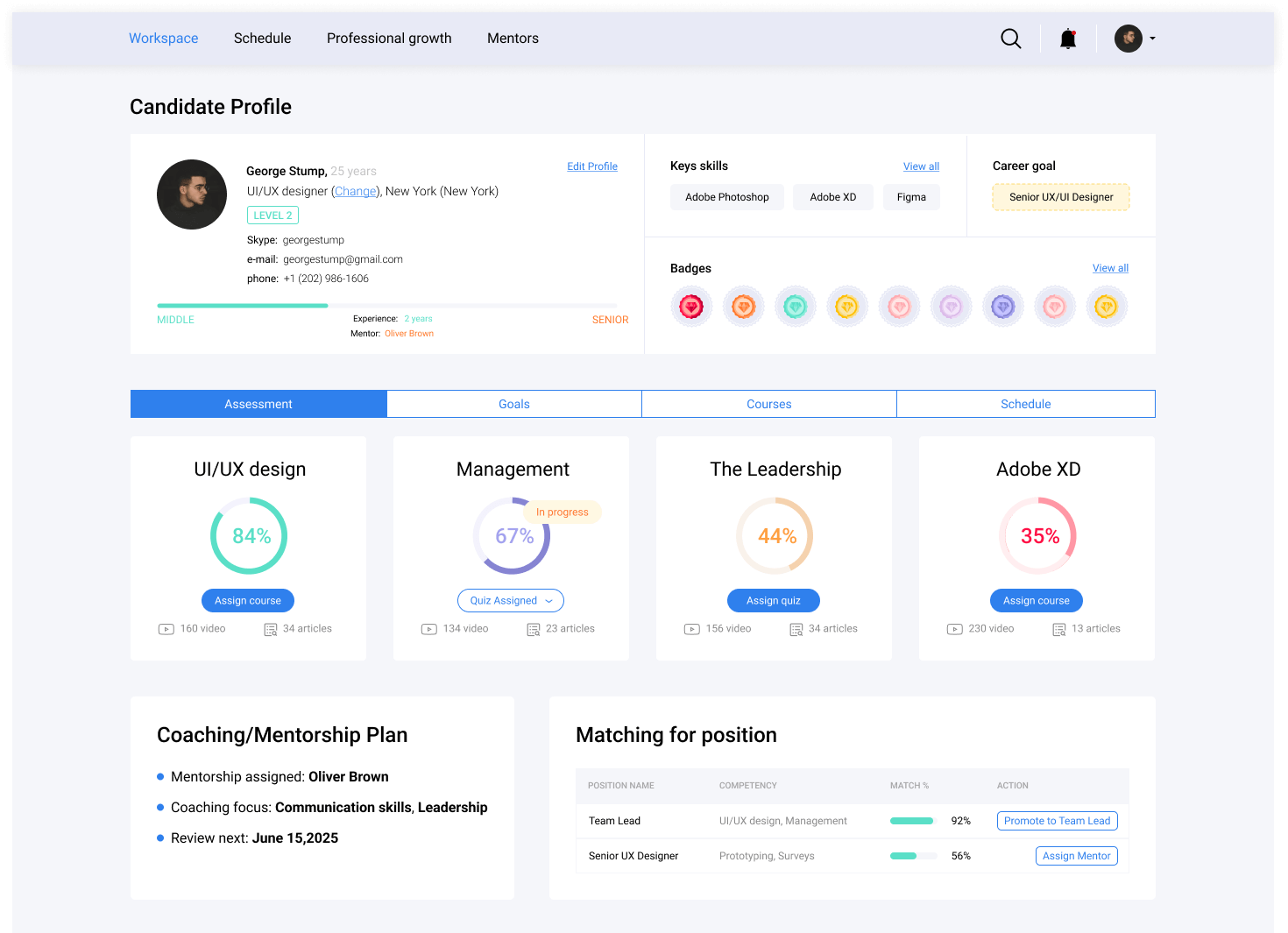
Skills Gap Analysis & Role Alignment
Our built-in competency matrix connects skill benchmarks directly to roles helping you evaluate candidates or employees against required skills and role expectations in real time. With an intuitive dashboard, you will see exactly how skills align with your goals - no guesswork required.
Our tools map everyone's skills to the roles you need to fill, so you can:
- Spot gaps in expertise before they slow progress
- Build stronger teams and match the right people to the right tasks
- Create training plans that deliver measurable results
We provide quizzes, self-assessments, and surveys to test skills and you see where people shine or need support. You get auto-update profiles - no spreadsheets needed! To match skills to roles perfectly, you can check at a glance who is ready for a promotion, who needs coaching, or where to hire next.
Track progress over time.
Role-Readiness Onboarding
New hires can declare their intended path (like “I want to be DevOps”), take quick skill check-ins, and automatically receive onboarding content matched to their level. The system tracks quiz results, assigns grades, and updates each profile to reflect them. You will see who needs help, mentorship, or extra support.
Here's how it helps:
- Evaluate candidates in action, not just in conversation
- New hires get a step-by-step plan, while experienced hires skip to advanced training
- Route more advanced users to role-specific upskilling or mentorship
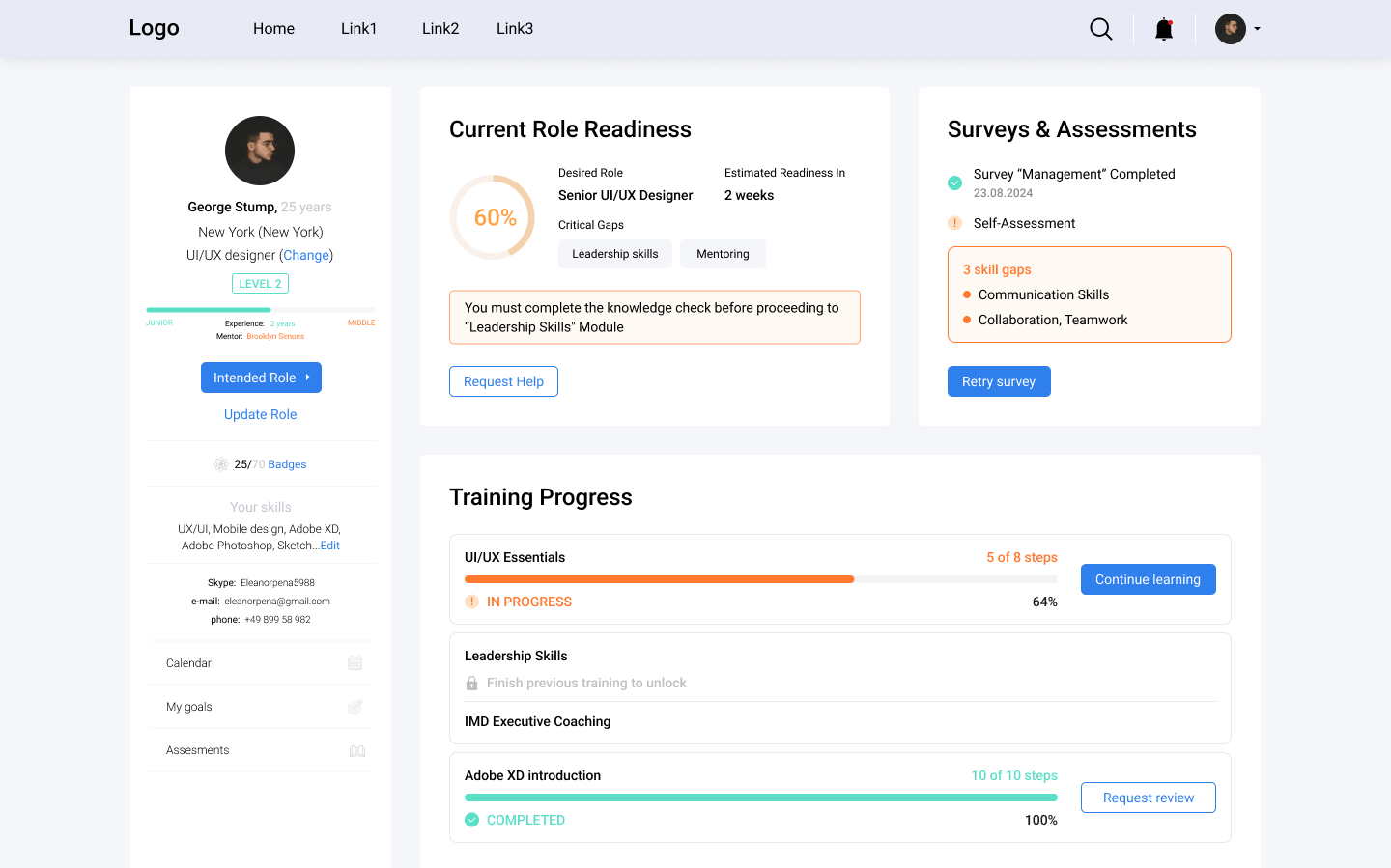
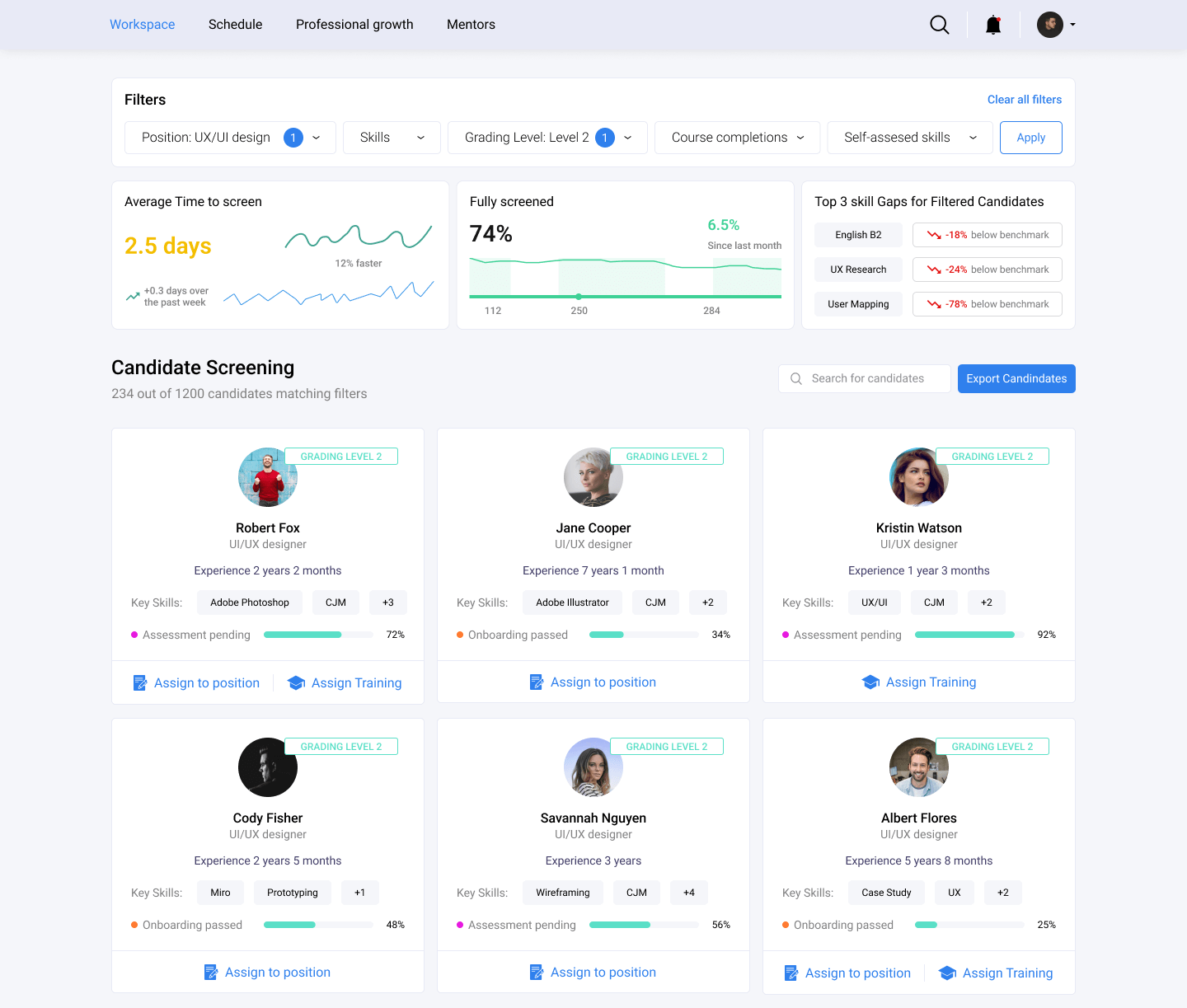
High-Volume Candidate Screening
Our platform supports screening using smart filters such as:
- Pre-set skills or qualifications (e.g., "Functional Testing – Senior")
- Grading levels (e.g., Entry-Level, Level 2, Senior)
- Skill tags (hard/soft skills, language level, self-assessments)
- Course completions or onboarding progress
You can manage thousands of candidates using advanced search, smart grouping, and scoring logic - all designed to streamline large-scale hiring workflows for agencies or internal HR teams.
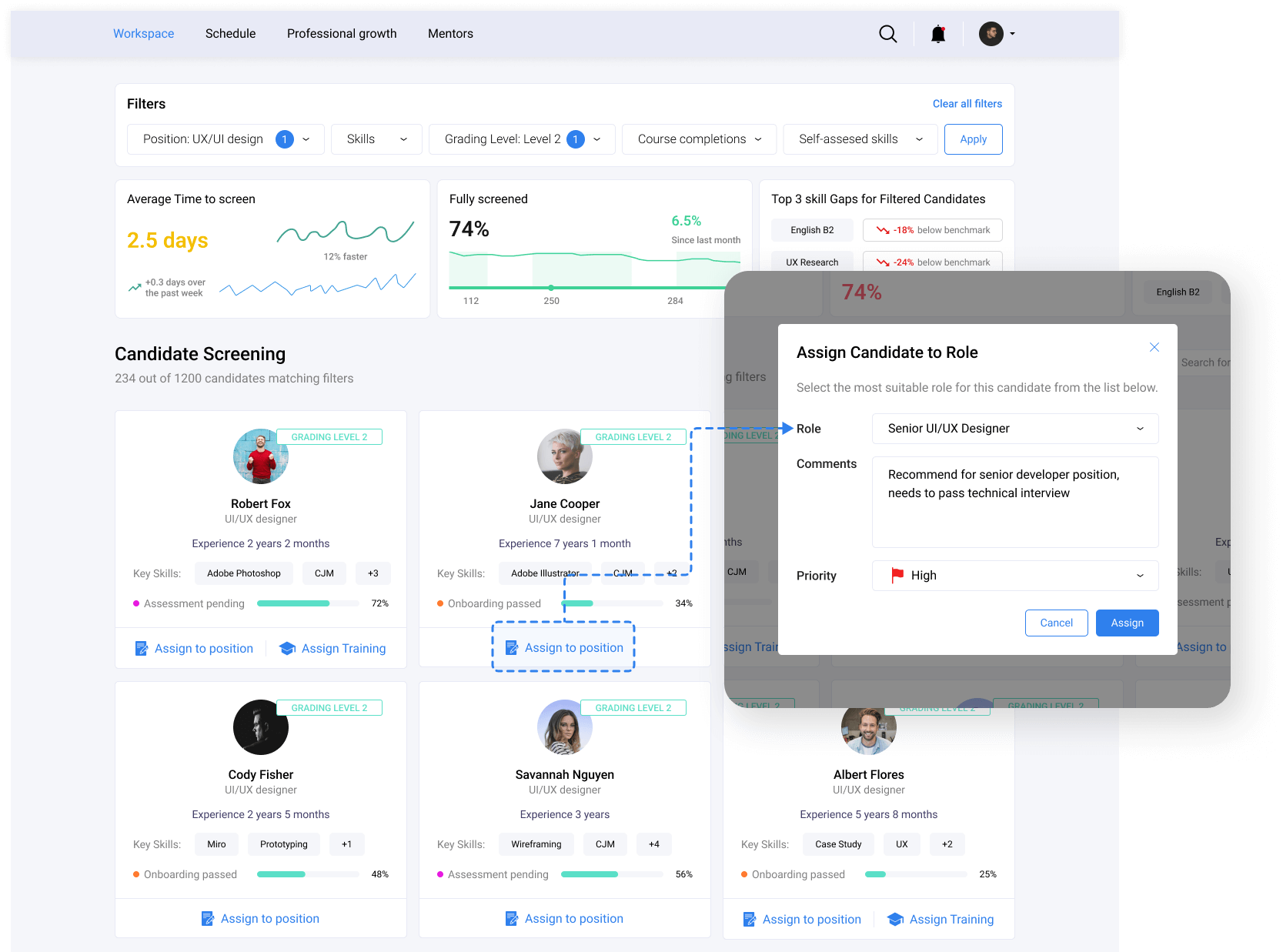
Flexible Role & Access Management
Our platform supports configurable user roles and access rules, like:
- Recruiter: manage candidate pipelines, assign grading
- Candidate: complete onboarding, submit assessments
- Employee: follow development tracks, update skill profiles
- Student or Trainee: receive training and mentorship
- Manager or HR Lead: oversee access by team or department
Ideal for teams juggling remote collaborators or external partners.
Grading and Competency Frameworks
These two system components power how your platform evaluates readiness, matches talent to roles, and supports long-term team development. They shape your talent model and define how skills are structured, how candidates are ranked, and how role fit is measured.
Our team works with you to adapt both grading logic and competency models to your use case.

Grading Module
We provide a customizable grading module to evaluate skill proficiency, assign role levels, and track candidate or employee progression over time. Our team configures grading logic to reflect your internal models, linking each grade to real qualifications, experience levels, and job expectations.
You can create grading tiers, for example, Entry-Level, Level 2, Specialist, or Lead. Each has specific skill, experience, or language requirements.
Grades can be assigned manually (e.g., during interview), or automatically based on onboarding quiz scores or self-assessments.
Use grading to:
- Rank candidates objectively
- Benchmark against pay or role expectations
- Filter by grade in mass screening or promotion tracking
This modular structure brings clarity, fairness, and comparability to every stage of your talent pipeline: from initial screening to final hiring decisions, no matter the size of your team.

Competency Framework
We offer a role-based competency framework to help you define the skills and capabilities required for any position: in operations, sales, healthcare, manufacturing, or beyond.
Our team works with you to structure or adapt these frameworks to reflect your organization’s roles, workflows, and expectations. You can start with universal models or create your own and outline core competencies by role, seniority levels, and specialization.
You can start with universal models or create your own and outline core competencies by role, seniority levels, and specialization.
These models enable you to:
- Structure job roles with clearly defined skill requirements
- Align onboarding and training to actual team needs
- Customize candidate assessments to role skills
Competency mapping ensures every candidate or employee is evaluated against consistent, role-aligned benchmarks, with equitable standards across recruitment, internal mobility, and performance management processes. You build stronger teams and make better hiring decisions.
Live Candidate Readiness Tracking
We keep candidate records accurate, searchable, and updated on our platform - all automatically. Profiles develop from CV uploads to onboarding, helping your team make smarter hiring decisions faster.

Dynamic Candidate Progression
Each profile updates over time, with capturing key changes like grading, quiz results, or role fit, so your hiring team always sees the most relevant, current snapshot of each candidate.

Auto-Updated Profiles
CV uploads, skill quizzes, onboarding tasks, and even manager interviews - all feed into the profile automatically. You spend less time entering data, and more time shortlisting, grading, and hiring.

Searchable Growth Paths
Looking for “everyone tagged Mid or above in QA who passed onboarding last month”? Your recruiters can quickly identify top matches from hundreds by filtering based on timeline, grades, or skills tags.
Reporting & AI Training Tools
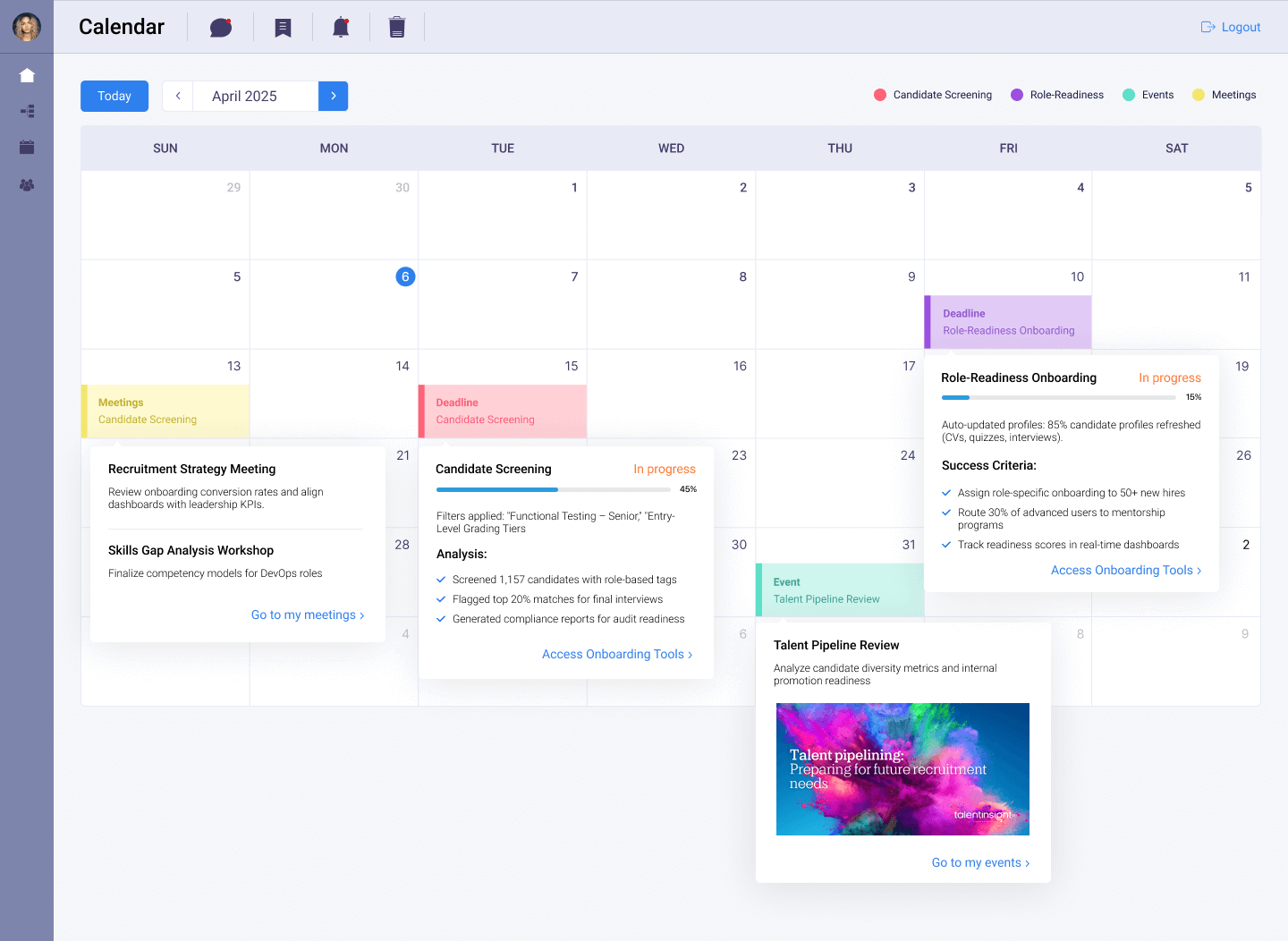
Advanced Hiring Analytic
Whether you are managing hundreds of applicants or tracking internal promotions, our reporting tools surface the insights you need.
AI-enabled Course and Assessment Creation
The AI Course Creator designs detailed, step-by-step courses and content on any topic, providing your experts with a structured head start, complete with pre-built modules and customizable templates. From there, they can tweak content, add real-life examples, or adjust the material to fit your team’s unique needs. The AI Quiz Generator creates assessments from your videos and documents.
With these tools, you cut hours off content creation and your experts focus on refining training, not reinventing. Training that is engaging, practical, and up-to-date.
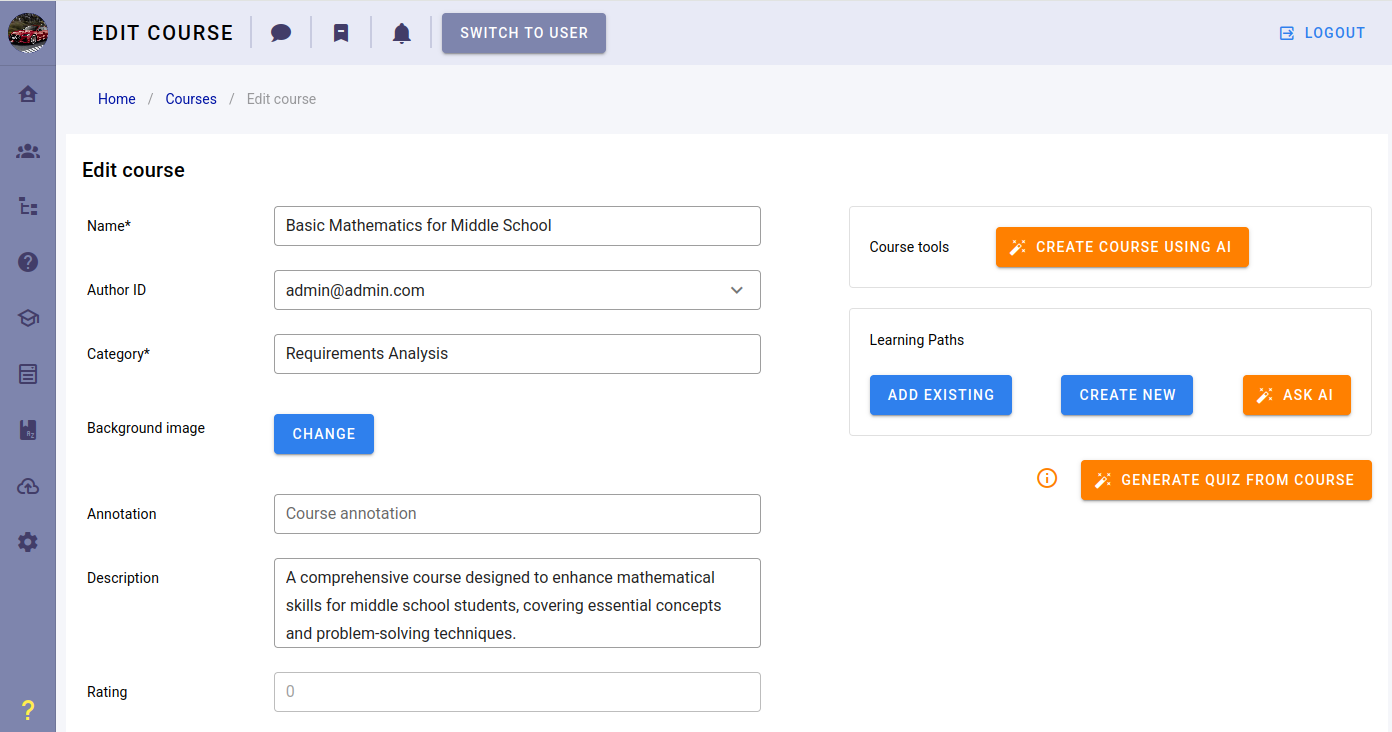
Platform Integration & Support Services
Integration with Your Existing Systems
Our platform connects with your current tech ecosystem, including ATS, CRM, HRM, and ERP systems. With robust API and webhook support, you can customize connections to match your workflows: syncing candidate updates, triggering grading logic, or sending onboarding tasks to internal systems. Nothing gets lost between tools.
Learning Content Compatibility
We support SCORM, xAPI, cmi5, and LTI standards, so you can embed existing modules into onboarding, assessments, or training flows with no rework needed. We make it easy to repurpose the learning content you already trust.
Data Migration
Our team ensures secure, accurate migration of your users, roles, grading levels, and onboarding records from spreadsheets, legacy ATS tools or LMS/LXP systems into your new platform with zero data loss or downtime.
Onboarding Content Support
We can help you create onboarding flows - including surveys, quizzes, video guides, and progression logic - mapped to your skill and grading models.
Recommended posts
Our Clients' Feedback

















.jpg)
.jpg)
.jpg)
















We have been working for over 10 years and they have become our long-term technology partner. Any software development, programming, or design needs we have had, Belitsoft company has always been able to handle this for us.
Founder from ZensAI (Microsoft)/ formerly Elearningforce